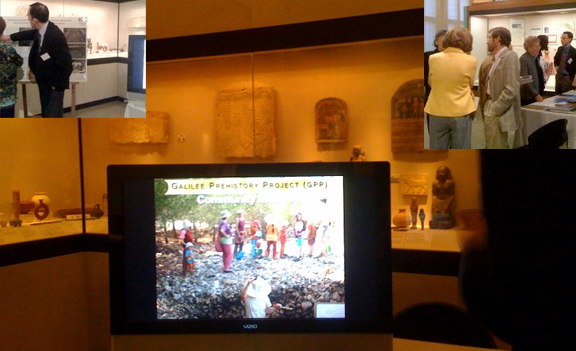| Sun | Mon | Tue | Wed | Thu | Fri | Sat |
|---|---|---|---|---|---|---|
| 1 | 2 | 3 | 4 | 5 | ||
| 6 | 7 | 8 | 9 | 10 | 11 | 12 |
| 13 | 14 | 15 | 16 | 17 | 18 | 19 |
| 20 | 21 | 22 | 23 | 24 | 25 | 26 |
| 27 | 28 | 29 | 30 | 31 |
CATEGORIES
RECENT ENTRIES
BLOG ROLL
Show-and-tell
 When the Oriental Institute invited friends and supporters to “Check Out Our Digs!” at an April 28 fundraiser, it meant just that. Ranged through the museum galleries at what OI Director Gil Stein jokingly called “the stations of the digs,” the directors and other team members of six active excavation projects—in Egypt, Israel, Syria, and Turkey—stood ready to answer questions about past discoveries and the coming season.
When the Oriental Institute invited friends and supporters to “Check Out Our Digs!” at an April 28 fundraiser, it meant just that. Ranged through the museum galleries at what OI Director Gil Stein jokingly called “the stations of the digs,” the directors and other team members of six active excavation projects—in Egypt, Israel, Syria, and Turkey—stood ready to answer questions about past discoveries and the coming season.
Taken together, Stein said, the six digs (a seventh will soon begin in Palestine) represent “the entire range of the development of civilization in the Near East.” The excavations also span the institute’s own history.
Stationed between the Assyrian and Syro-Anatolian galleries, Scott Branting, AM’96, has worked for almost two decades at Kerkenes Dag, an enormous ancient city—one square mile—near Yozgat, Turkey. The OI began excavations there in 1928, work that was a bit like searching for a needle in a haystack. Branting uses geophysical tools like magnetometers and resistivity meters to survey the huge city to find the most promising places to dig. Working with researchers at Argonne National Lab, he is also developing agent-based models, simulations that place “virtual people into the city plans,” to recreate patterns of city life, circa 600 B.C.
In the Egyptian gallery, Yorke Rowan explained a much newer dig, the Galilee Prehistory Project at Marj Rabba, Israel. The first OI dig in Israel in several decades, its goal is to understand the rapid changes in the relationship of villages, ritual sites, and mortuary practices during the transition from the Neolithic to the Bronze Age. Rowan expects to spend two or three more years at Marj Rabba, a small village site where the project began last summer, before moving on to a large village and then to a burial site.
Guests could stop for sustenance in the Persian Gallery, then return to dig deeper. For those interested in uncovering the OI’s own history, there was also “Pioneers to the Past: American Archaeologists in the Middle East, 1919-1920." The special exhibit details OI founder James Henry Breasted’s post-World War I trek through Egypt and Mesopotamia to buy artifacts for the new institute and to select sites for future digs.
Mary Ruth Yoe
May 7, 2010
